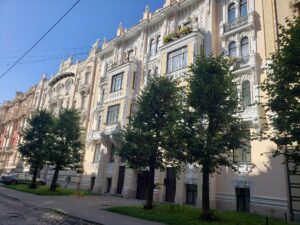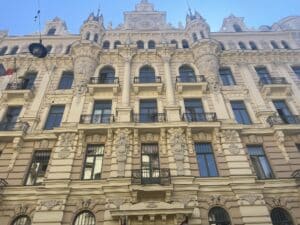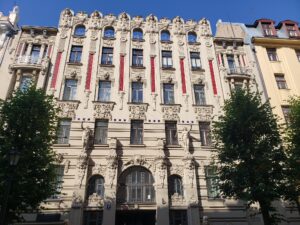Latvia’s rich Art Nouveau heritage was shaped by European trends, influenced by local folk aesthetics, and popularized under Latvia’s National Awakening, a movement that first sought to define what it meant to be proudly Latvian. Art Nouveau flourished in Latvia for less than two decades. It rose with the economic prosperity and social mobility at the end of the 19th century and was effectively ended by the devastation of World War I. However, to this day, Latvia’s cities are largely defined by their prolific Art Nouveau, which remains a point of national pride and a source of awe for visitors to Latvia.
What is Art Nouveau?
Art Nouveau appeared at a time of rapid scientific and social change. As democratic ideals, industrialization, and urbanization blossomed, the founders of Art Nouveau sought to unify the arts – bringing the beautiful and mundane together and uniting high art with peasant crafts. These artists sought to bring beauty to cities in danger of becoming industrial slums. Art Nouveau embraced the unique, the human, and the complex, fractal forms of nature in a world many feared was becoming overly simplified into what could easily be factory pressed.
Art historian Jeremy Howard said that Art Nouveau caters to audiences’ “wildest fantasies” through ostentatious decoration and abstracted subjects, utilizing geometric shapes despite depicting natural subjects (Howard 2-3). Meanwhile, fellow scholar Cybele Gontar contends that while elaborate geometric design is a core characteristic of the style, the nature motifs within Art Nouveau must be understood as a reaction against rapid industrialization and urbanization by embracing the “unruly aspects of the natural world” (Gontar).
Art Nouveau can thus be seen as bridging two worlds, demanding that the nature and humanity threatened by industrialization be preserved and respected. Perhaps ironically, Art Nouveau made these demands even as many of its greatest works were funded by the enormous profits that industrialization was creating.
Latvia’s National Awakening
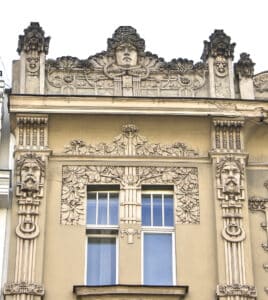
The first Art Nouveau buildings in Latvia were built by Baltic Germans. These Germans had dominated Latvia’s cities, commerce, and politics since forcibly taking control of the land during the time of the Crusades. However, this began to change after the Russians conquered what is today Latvia over the course of the 18th century. Russia took special interest in developing Riga into a major port and industrial center, linking it to the rest of the empire via railways (Krastins 397; Howard 185).
As investment and new population poured in, Riga began to change. Permission from the tsar was obtained to demolish the ramparts separating the city from the countryside, as well as the fortifications surrounding the Citadel. These demolitions, between the 1850s and 1870s, created new space for boulevards lined with apartment buildings, parks, and assorted public-use buildings (Krastins 396, 397). At around the same time, Russia emancipated the serfs, and soon Latvians were arriving to Riga from their agrarian communities, seeking opportunity in the growing factories and universities there (Howard 185).
These newly urban and increasingly educated Latvians soon formed the first wave of the National Awakening (Plakans 89). Before this, any upwardly mobile Latvian was compelled to adopt the German language and culture in order to enter urban commerce and politics. (Plakans 84). The Awakening, for the first time, held that Latvian culture was equal to any other and Latvians should be able to advance socially with their heritage intact. To prove this, Latvian thinkers began assembling a national historiography, popularizing the Latvian language, recording folklore, and most importantly, incorporating that folklore into high art forms such as opera, painting, and architecture (Plakans 94).
How Art Nouveau Became Latvian
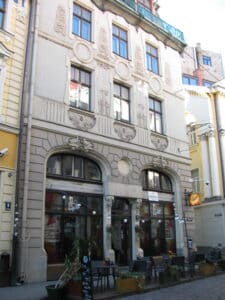
Latvia’s first Art Nouveau building was completed in Riga in 1899, designed by German-born architects Alfred Aschenkampff and Max Scherwinsky. It still stands to this day at Audēju iela 7, with its exterior mostly intact. It features floral motifs, geometric designs, and human faces carved into its relief. It is a relatively simple yet still elegant example of Art Nouveau, much as you might find almost anywhere in Europe.
As ethnically-conscious Latvians began to populate the many educational and professional institutions that dotted Riga by the late 19th century, Art Nouveau was heavily localized in its style and expression. Two early institutions that led the way on this were the Technical Society (founded 1864) and the Polytechnicum (now known as the Riga Polytechnic Institute), both of which were heavily concerned with issues of local architecture (Howard 185). Organizations focused on local arts also opened, such as the Crafts School of the Riga Trades Association (founded 1872) and the Riga Society of Art Promotion (founded 1870). These organizations were increasingly concerned with Latvian expression in particular and, especially as they developed a new generation of Latvian artists and architects, they were at the forefront of what became the National Awakening (Howard 186).
These individuals consciously “localized” Art Nouveau by integrating motifs inspired specifically by local nature and folklore into numerous aspects of each building (Howard 187). One of the best early examples is the apartment at Alberta iela 12 (built 1903), which was designed by Konstantins Peksens and Eizens Laube, both graduates of the Riga Polytechnic Institute. The halls of the apartment feature extensive paintings of roses, chestnuts, and pinecones, which are all common to the Latvian countryside and feature variously in folktales and even local culinary traditions (Tipane 8, 10). Additionally, reliefs of local breeds of squirrels and birds can be found on other parts of the exterior, and some rooms in the building contain stained glass windows that also depict native flora (Tipane 7, 11).
Konstantins Peksens and Eizens Laube, along with Aleksandrs Vanags, soon became leading figures of the Latvia’s National Romanticism movement, as this specifically localized Art Nouveau came to be called. National Romanticism was a larger movement across Europe in the early 20th century as new national and social beliefs coalesced with emerging art movements, taking highly individualized forms for each culture (Ateniske 1). Laube and Vanags, who both worked in Peksens’ office at the time, traveled to Helsingfors (now Helsinki) in 1904 to survey the national architectural style materializing in Finland. Drawing inspiration from their observations abroad, the Latvian architects began to incorporate elements reflecting Latvian culture into their work in the Nationalist Romantic style (Howard 204, 205).
Elements from “native” Latvian culture, such as rural timber architecture and textile patterns, were integrated into early examples of National Romantic architecture in order to ascribe a uniquely “Latvian” identity to it. A school building built in 1905 and located at Terbatas iela 15/17 was designed by Peksens and Laube and provides an early example of the Latvia’s National Romanticism – the exterior features “Lativan arches” framing the windows, which features a “tapered upper part” and floral motifs on green tiles inspired by Art Nouveau. Further, it was constructed of domestically sourced limestone and red brick with timber elements (Ateniske 5)(Howard 205). The Klavina House located on A. Čaka iela 26 (1905), also designed by Peksens and Laube, similarly features tapered window frames as well as exterior ornamentation depicting cornflower pods, borrowed from Latvian embroidery (Howard 205).
Many other buildings exemplary of the National Romantic style in Latvia can be found in the form of apartment buildings. Vilandes iela 10 (1908), an apartment building designed by Peksens, features an asymmetrical façade characteristic of Art Nouveau as well as a relief depicting flower wreaths, dancing women, and a satyr inspired by a Latvian folk tale. Additionally, the exterior features rusticated elements (decorative reliefs cut deep into stone), and as with most Art Nouveau buildings of the time, the exterior also features abstracted, geometric décor (jugendstils.riga). Likewise, another Peksens composition found on the same street exhibits similar traits – the facades of Vilandes iela 16 comprise of ornamental reliefs depicting native flora and rustic components (jugendstils.riga).
Eventually, Vanags and Laube departed from Peksens’ office and set up their own practices in 1905 and 1907, respectively. Subsequently, the two architects continued fostering the National Romantic movement in their own right. As with their predecessor, many of the National Romantic-style buildings they designed took the form of apartment buildings. One such example is an apartment located on Alberta iela 11 (1908), designed by Laube. The tapered window shapes greatly resemble those of Peksens’ schoolhouse at Terbatas iela 15/17, and the façade similarly features natural stone. As with Peksens’ Vilandes iela 10, Alberta iela 11 also exhibits “exaggerated” rusticated elements decorating the exterior and ornamentation recalling Latvian folktales (Ateniske 10). Vanags followed closely – in 1906, he designed an apartment complex on the corner of Brivibas and Lačpleša iela that features ethnographic ornamentation under the cornice, framing the windows and door, as well as decorating the interior. The building later belonged to actor and publisher Janis Brigaders, who became well-known during this time for his efforts to circulate works by Latvian writers (Ateniske 12). In addition, in 1909 Vanags designed three apartment buildings on Kr. Barona iela that feature asymmetric facades, echoing some apartment buildings’ exteriors of Peksens’ creation seen on Vilandes iela.
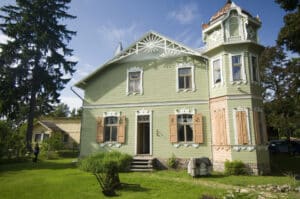
Other buildings, such as the Mutual Credit Society Bank (1909) located at Terbatas iela 14, celebrate different aspects of Latvia rather than strictly cultural heritage, such as the prolific commerce witnessed in the late 19th and early 20th centuries. Reliefs on the outside depict anchors and medical staffs, recalling the city’s celebrated reputation as a port and a pioneer in modern medicine. Instead of displaying natural motifs as with many other Art Nouveau buildings, stained glass windows around the staircase depict other scenes recalling local trade and commerce of turn-of-the-century Latvia. Another window visible from the ground floor displays a portrait of Krisjanis Valdemars, a politician, folklorist, economist, and one of the central figures of the National Awakening (Krastins 404).
Through all of this we can see how Art Nouveau arose to be a particularly potent artistic expression in Latvia. As Latvians rose up to become better educated and urbanized, they also demanded that their culture and language be seen as equal to any other. As they began to rise in politics, architecture, the arts, and commerce, they felt strongly that this should be expressed in every way possible including the structures that they designed, funded, and built. The recent reorganization of the city center, with the removal of the city fortifications, provided ample space for this art to be expressed. Further, the investment that poured in from Russia’s imperial coffers to develop the city into a shipping hub it ironically also helped to fund what would be a lasting expression of Latvian nationalism.
Latvia’s architecture boom ended abruptly with World War I. Latvian nationalism remained a viable force at this time. In fact, as war was ending, the Latvians rose up against both the Germans and Russians that had long subjugated them, fought a war for independence and established a united, sovereign Latvian state for the first time in history. Nonetheless, the wars left its economy was crushed and it could no longer afford the florid artistic expressions of Art Nouveau architecture. Instead, functionalism, a style that emphasized the plain and utilitarian came to dominate the relatively little construction that occurred, mostly of single-family homes and small apartment buildings, to replace those lost in the war. This style would largely last throughout Latvia’s period of independence and its Soviet period. However, as a saving grace for Latvia, most of its cities were left largely intact and most of its beloved Art Nouveau buildings were left standing. Most stand today.
The Legacy of Art Nouveau in Latvia
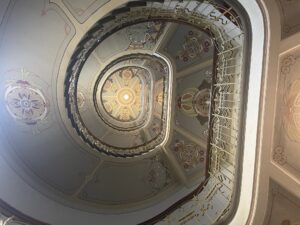
Latvia still boasts one of world’s largest assortments of Art Nouveau architecture (Howard XII). Today, these buildings serve as a major tourist attraction. Locals have organized various tours of the city in order to highlight their Art Nouveau heritage and its lasting significance. In addition, some historically significant locations have been repurposed as museums – Konstantins Peksens’ former residence at Alberta iela 12, for example, was converted into the Riga Art Nouveau Center. The museum, which opened in 2009, features an “authentic interior” demonstrative of a typical Art Nouveau-style apartment. Visitors can explore the restored living room and fireplace room, both complete with stucco décor featuring floral motifs, stained glass windows of the dining room, a tub complete with enamel embellishments in the bathroom, and more (jugendstils.riga.lv).
In terms of conservation efforts, conservation efforts soon after the collapse of the Soviet Union were impacted by the lack of funding. This was particularly distressing as Soviet authorities neglected many of these buildings, particularly apartments. This left many buildings dilapidated and unfit for occupants, but oftentimes, residents are unable to relocate elsewhere due to limited available housing (Los Angeles Times). In some cities, such as Riga, property owners have opposed their historic buildings being designated as “cultural heritage monuments” even though this might mean access to government funding to restore and preserve properties. The status comes with considerable limitations and requirements on how the building would need to be maintained and what could be done with it. (ENG.LSM.lv). Meanwhile, cities such as Daugavpils, which also had considerable Art Nouveau development, recently allocated substantial funding towards renovations (ENG.LSM.lv).
Nonetheless, Latvian cities and Latvians themselves embrace Art Nouveau buildings as important cultural monuments and expressions of their early efforts to unite as a nation and celebrate their cherished identity.
Works Cited
Ateniske, M. National Romanticism in Latvia: The Emergence of a Style. 2008.
Gontar, Cybele. “Art Nouveau and Industrialization.” The Journal of Decorative Arts, 2021.
Howard, Jeremy. Art Nouveau: International and National Styles in the Modern World. Manchester University Press, 2009.
Krastins, Janis. “The Development of Riga’s Urban Structure and the Role of Art Nouveau.” Baltic Architecture Review, vol. 3, 1995, pp. 395-404.
Plakans, Andrejs. The Latvians: A Short History. Hoover Institution Press, 1995.
Tipane, Liene. Art Nouveau in Latvia: Floral Motifs and Folk Influences. Riga Polytechnic Institute, 2005.
You’ll Also Love
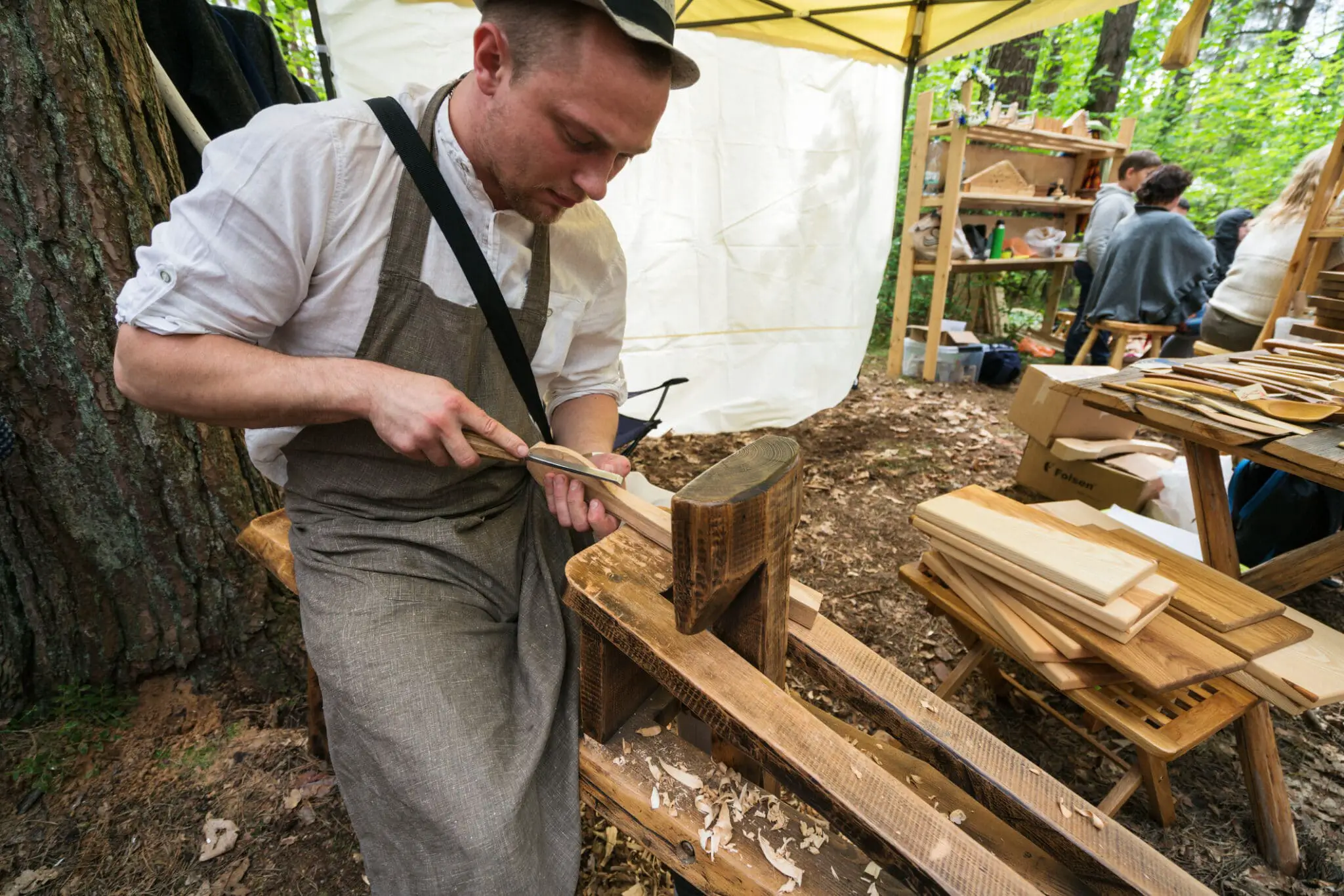
Riga Museums: History, Art, Science, and Architecture in the Latvian Capital
Riga’s museums offer a fascinating look at Latvia’s culture, history, and especially architecture and transport infrastructure. From the Museum of the History of Riga and Navigation, housed in the iconic Riga Dom, to the Latvian National Museum of Art, showcasing the finest works of Latvian artists, and the Art Nouveau Museum, exhibiting the city’s famous […]
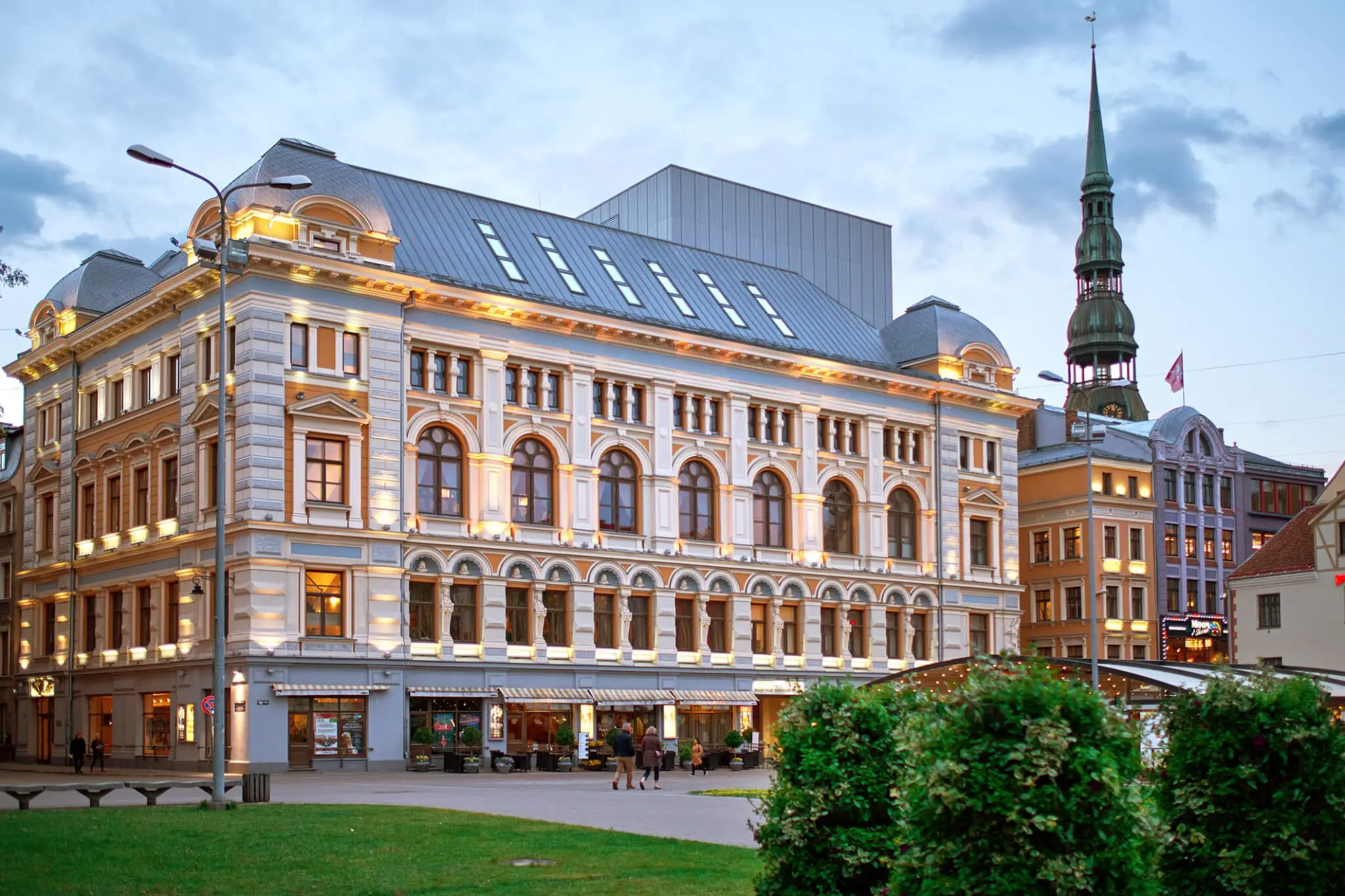
Mikhail Chekhov Riga Russian Theater
Located in the heart of Old Riga, the Mikhail Chekhov Riga Russian Theater has played a central and outsized role in the history of Russian language arts and culture in Latvia. To this day, about 25% of Latvia’s population is native Russian speaking. This theater, which, in 2023, marks 140 years since its founding, remains […]
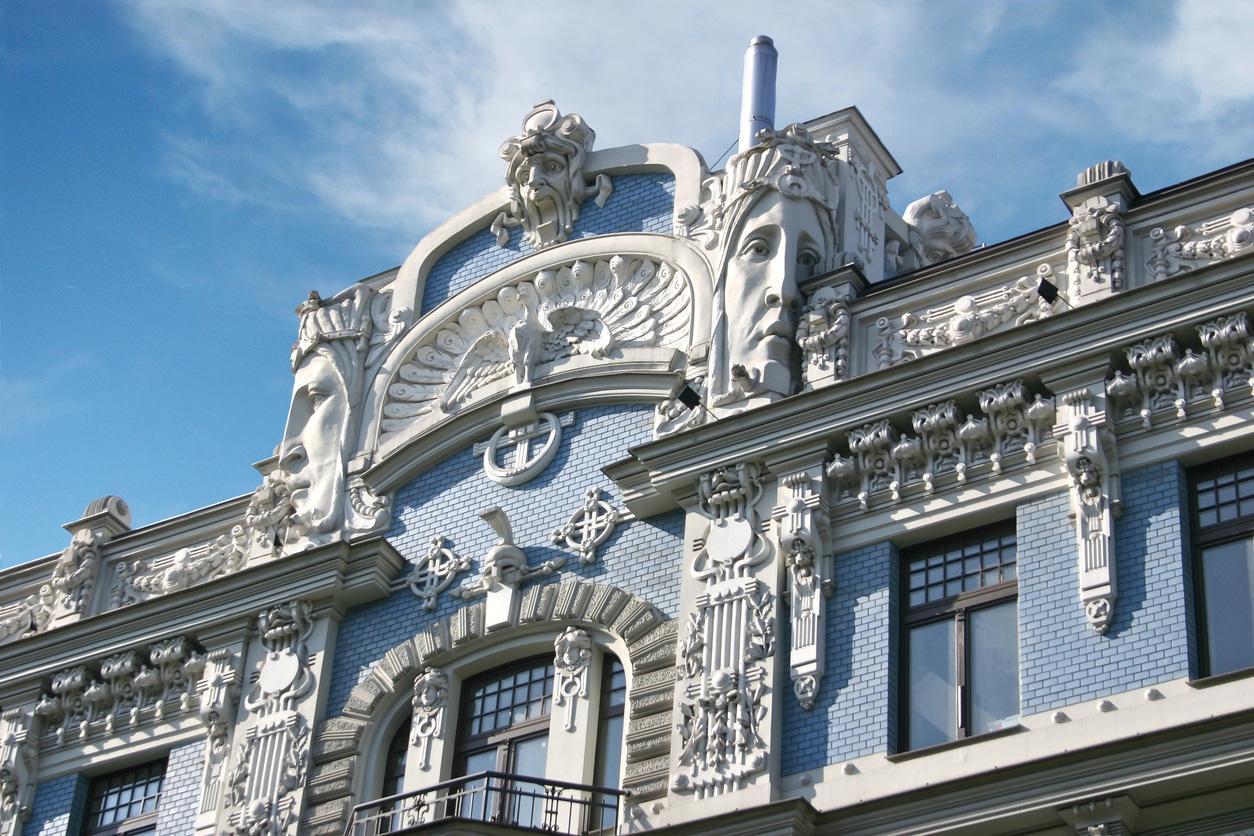
How Art Nouveau Became an Expression of Latvian Identity
Latvia’s rich Art Nouveau heritage was shaped by European trends, influenced by local folk aesthetics, and popularized under Latvia’s National Awakening, a movement that first sought to define what it meant to be proudly Latvian. Art Nouveau flourished in Latvia for less than two decades. It rose with the economic prosperity and social mobility at […]
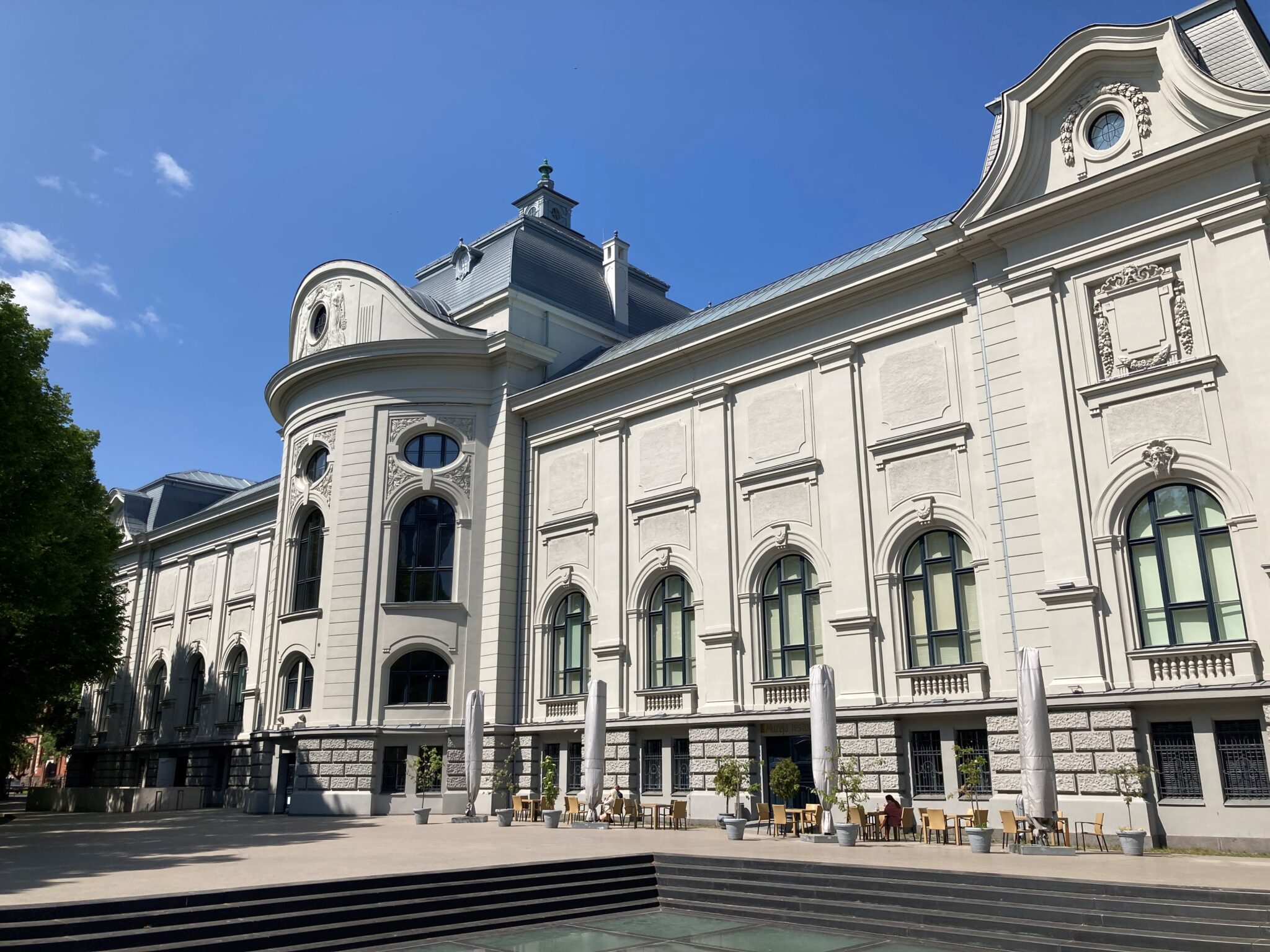
Latvian National Museum of Art
The Latvian National Museum of Art is one of Riga’s oldest and best known art museums. Its permanent collections focus specifically on Latvia’s own national artists and on telling the story of the development of art in Latvia. It also rotates temporary exhibitions that can introduce you to even more striking and more recent Latvian […]
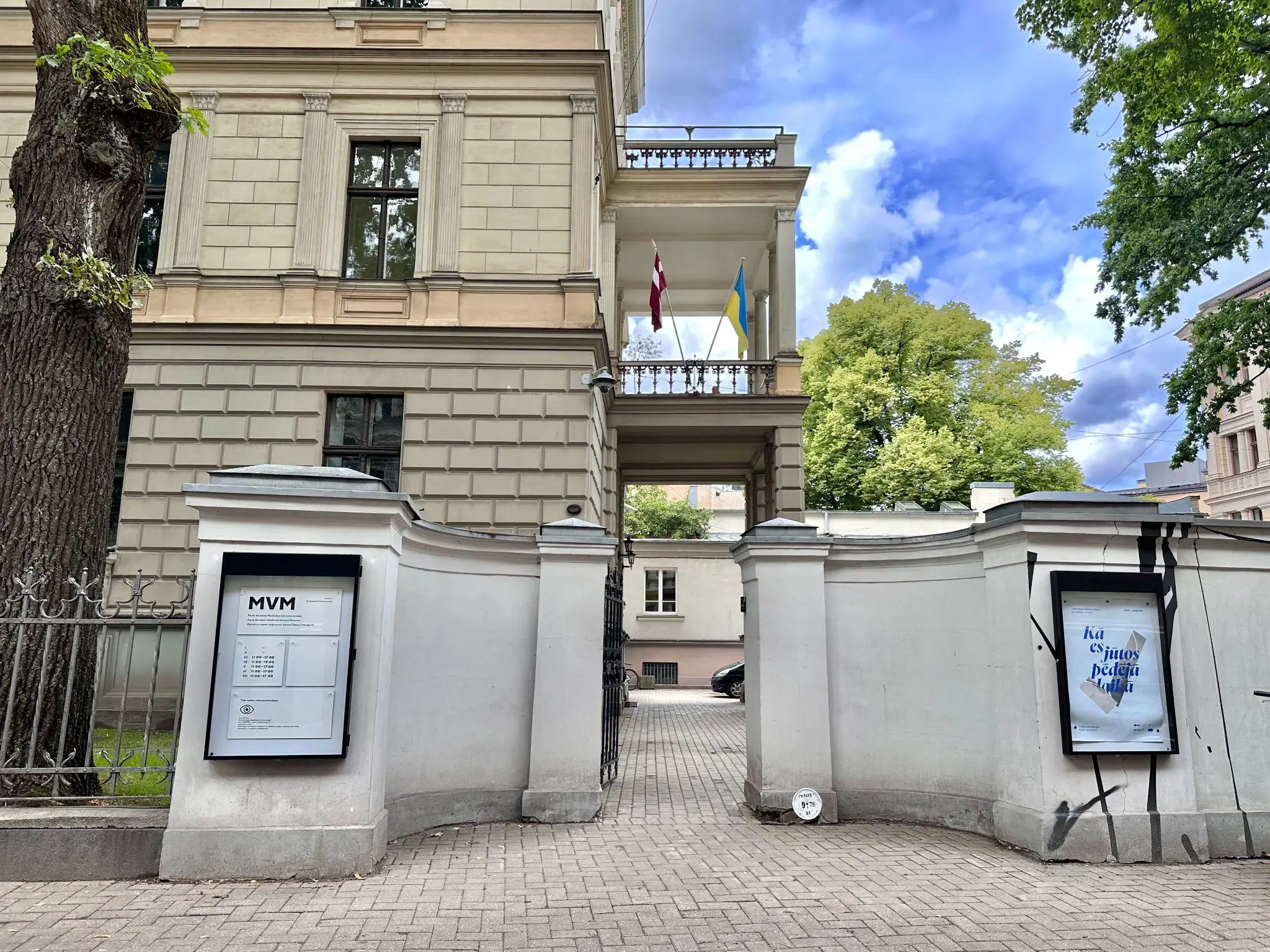
Pauls Stradiņš Museum of the History of Medicine
The Pauls Stradiņš Museum of the History of Medicine, located in Riga, Latvia, is one of the world’s largest museums devoted to healthcare and medicine. It covers the history of medicine from ancient times to the modern, with a special focus on healthcare in Latvia. The museum showcases the historical progression of medical knowledge, instruments, […]


